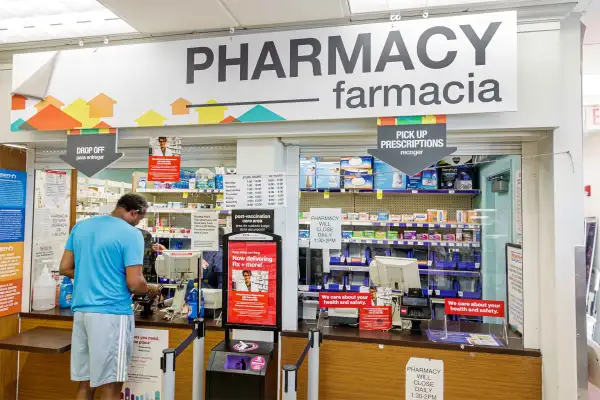In May 2025, Money released its inaugural ranking of the best hospitals for rehabilitation.
Our ranking prioritizes well-staffed hospitals and inpatient rehabilitation centers that offer comprehensive, multidisciplinary recovery care led by experienced physicians and specialists.
Our core data partners for this project were Denniston Data and Definitive Healthcare. Money also analyzed data from the Centers for Medicare & Medicaid Services, The Joint Commission, and the American Nurses Credentialing Center as well as Google Places for public reviews and ratings.
Here’s a detailed look at how we arrived at our ranking of the top 75 hospitals.
Strict benchmarks were set
To be in the running, hospitals in our analysis must have had a demonstrated baseline of providing quality care.
Because of the difference in data reporting requirements between short-term acute care facilities (that is, general hospitals that provide rehab services) and standalone rehabilitation hospitals, we needed to standardize the quality benchmarks between the two hospital types.
Short-term acute care hospital benchmarks
For general hospitals, candidate facilities must have received at least 3 out of 5 stars from Centers for Medicare & Medicaid Services (CMS) for both quality and patient experience.
CMS’s quality rating (reflected in the hospitals ranking under "Quality Rating”) is based on five key factors, weighted as follows:
- Mortality (22%): reflects the death rates related to cardiovascular issues, strokes, pneumonia and treatable complications after surgery
- Safety (22%): tracks the rate of infections associated with certain surgeries, IVs and catheters and rates of complications after specific procedures
- Readmission (22%): considers how often patients are readmitted to the hospital, along with how long they stayed and whether there were unplanned visits for outpatient treatment
- Patient experience (22%): reflects the degree to which patients had a positive experience at the facility, based on self-reported ratings of communication with their doctors and nurses and other factors, including whether their bathroom was clean and their room was quiet at night
- Timely and effective care (12%): estimates how quickly patients received care for chest pain or strokes; how long they stayed during an ER visit; the proportion of health care staff who are vaccinated for flu and COVID-19, and other time-sensitive metrics
On the listing, we segmented out the patient experience rating, which is displayed as “Patient Rating.”
Additionally, Money leveraged a novel way our data partner Denniston measures expertise in specialty areas: that is, by rewarding hospitals for their staff’s collective experience performing rehabilitative procedures and services. General hospitals are rewarded for their staffs’ collective experience in the form of Denniston’s Composite Ranking Score (CRS).
To be measured by rehabilitation experience, and considered for this specialty list, facilities must have active physicians and specialists on staff. The CRS is a percentile that gets translated into a letter grade. The letter grading system is based on the following percentage ranges:
- A+ reflects a CRS score of 95% to 100%.
- A is 85% to 94.99%.
- A- is 80% to 84.99%.
- B+ is 75% to 79.99%.
- B is 65% to 74.99%.
- B- is CRS 60% to 64.99%.
- C+ is 55% to 59.99%.
- C is 45% to 54.99%.
- C- is 40% to 49.99%.
- D+ is 35% to 39.99%.
- D is 25% to 34.99%.
- D- is 20% to 24.99%.
- F is below 20%.
To ensure general hospitals were adequately equipped to provide rehabilitative services, the facilities had to have a dedicated rehabilitation unit, as well as a minimum grade of B+ in physical medicine & rehabilitation services.
Some 283 general hospitals received at least 3 stars from CMS and a B+ for rehabilitation specialty, clearing the benchmark to be included in the ranking.
Inpatient rehabilitation hospital benchmarks
Inpatient rehabilitation hospitals are not required to report the same data to CMS that is used to produce the federal agency’s star ratings, so we developed a different methodology to yield those ratings for our ranking.
The method leveraged similar clinical metrics that rehab hospitals provide as part of a separate program run by the CMS. As a result, Money was able to re-create the CMS five-star rating system as closely as possible.
For patient experience data, which is not collected by CMS for these types of facilities, our analysis relied on patient reviews posted online. We extracted the reviews using Google Places application programming interface (API).
For these dedicated inpatient rehab facilities, the data that comprised the “Quality Rating” and “Patient Rating” entries on the ranking were weighted as follows:
- Successful discharges (22%): includes risk-adjusted discharge rate, successful returns to home, percentages of patients who were judged to be able to move around and care for themselves at discharge
- Safety (22%): CAUTI (catheter-associated urinary tract infection) rates, risk-adjusted rates of bed sores and falls during stay
- Readmission (22%): Rate of preventable readmission rates after 30 days, rate of preventable readmissions to hospital during an inpatient rehabilitation facility stay
- Patient experience (22%): gauges the typical self-reported patient experience, based on facilities that had at least 50 reviews on Google.
- Timely and effective care (12%): Rate of COVID-19 vaccination as well as whether the health care staff handled patient medication issues in a timely manner and whether patients’ medication list were communicated to family, caregivers or hospitals at discharge
Inpatient rehabilitation facilities must have also received at least 3 out of 5 stars for quality and patient experience.
These benchmarks yielded a list of 563 specialty rehab facilities, which was further culled using the methods that follow.
Refining the list of facilities
Since over 800 hospitals and specialty rehab facilities met the above benchmarks, Money gathered and analyzed additional data on each facility to refine the list. This included information on area(s) of rehab specialization, participation in clinical trials and levels of staffing.
Each hospital’s rehab specializations were assessed according to whether it operated a dedicated rehab unit (for general hospitals) and by the rehabilitation certifications it earned from The Joint Commission (TJC), the non-profit health care accrediting organization. (TJC certifies facilities that meet rigorous patient-safety, quality and equitable-care standards.)
Hospitals were rewarded in our analysis if they earned certifications in rehabilitation areas related to strokes, brain injuries, hip fractures and cardiac injuries. These areas of rehab specialization were weighted at 40%.
In addition to being a filter for eligibility, a hospital’s quality and patient-experience ratings were factored into its score as well — at 30%.
As an indicator of cutting-edge care and dedication to research, Money also looked at whether a hospital has participated in clinical trials and, if so, how many times. More trials resulted in a higher rating. Clinical research was weighted at 15%.
Finally, staffing factors rounded out the remaining 15% of the score. Rehabilitation requires a dedicated, engaged team of experienced specialists to care for and support patients. Facilities were rewarded in our ranking if they were designated as magnet hospitals – those that implement the latest research and peer-reviewed practices into daily care by the American Nursing Credential Center, and if they maintained an above-average number of specialists, as reflected in the facility’s staff-per-bed ratio.
Measuring price transparency
Each hospital on our list includes Money’s proprietary “Price Transparency” grade. This metric, a longstanding part of our methodology, measures how closely a hospital’s final bills align with its initial cost estimates. While this grade is not a weighted factor in our rankings, it provides an indication of how closely the facility's final bill might align with its initial cost estimate.
In 2025, we have updated this analysis to also account for the level of charity care — or free care — each facility provides to low-income patients.
We arrived at the price transparency score by assessing how closely each hospital’s publicly posted prices (also known as chargemaster prices) aligned with the actual payments received, whether from Medicare, private insurance companies or patients themselves.
Put simply, we asked: How does a hospital’s sticker price compare to what people (or Medicare) actually end up paying?
To evaluate this, we used two standardized ratios:
- The first compared chargemaster rates to total patient payments from both insured and uninsured individuals.
- The second examined the gap between gross charges and the amounts Medicare approved for reimbursement.
Both ratios were converted to a 100-point scale and then translated into letter grades, using the same grading method as elsewhere in our analysis.
To account for charity care, we deducted its value from a hospital’s gross charges before calculating the ratios. This adjustment ensures that hospitals providing above-average levels of free care aren’t penalized for bringing in less revenue.
Even after adjusting for charity care, most patients pay significantly less than a hospital’s listed prices. While this difference may seem like a discount, in reality, chargemaster prices are often set well above what insurers or patients actually pay. These behind-the-scenes negotiations contribute to the lack of pricing clarity in hospital care, and to rising health care costs overall.
It’s worth noting that the Price Transparency grade is not a measure of affordability. A hospital with a B+ rating isn’t necessarily cheaper than one with a C. Instead, the grade reflects how accurately the hospital’s listed prices reflect the final amounts paid.
While the transparency score does not affect a hospital’s overall ranking, we include it to help patients better assess how reliable a facility’s cost estimates are likely to be.
Vetting the top-scoring hospitals
While data and metrics are the backbone of our hospital rankings, they don’t always tell the whole story about a facility. To capture potential concerns not reflected in the numbers, Money conducted an editorial review of every hospital under consideration to identify any red flags.
Through this process, we excluded several facilities with past incidents that raised serious concerns about care quality or patient safety. These issues included occurrences of falsified research, inaccurate data reporting, malpractice, unnecessary procedures, and sexual misconduct — all indicators of potential systemic problems.
Ultimately, 75 hospitals passed our editorial screening and earned a spot on our list of the best rehabilitation hospitals.
Data sources: Definitive Healthcare; Denniston Data
Supplementary data: American Nurses Credentialing Center; Centers for Medicare & Medicaid Services; RAND Health Care; The Joint Commission






